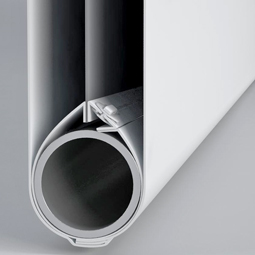Pillowcase

Fabric is pulled over a frame so that the seams and zippered openings follow the outer perimeter of the structure. The zipper on a pillowcased structure usually runs along the underside of the lowest pole to hide it.

Fabric is pulled over a frame so that the seams and zippered openings follow the outer perimeter of the structure. The zipper on a pillowcased structure usually runs along the underside of the lowest pole to hide it.

The structure is fed into tunnels around the perimeter of the structure allowing for a single skin between. Often, a zipper is not necessary, as the poles can be fed through a hidden hole in a corner. A single skin is usually used when translucency is desired.

A zipper around the perimeter of a single skin is often used for liners and structures that require easy removal. The zipper would be used on the backside where it is visually discrete, and it usually stops and starts at each corner.

A pllowcase with binding is usually used when the fabric does not have enough stretch to fit over a frame without wrinkles. The stretchy binding pulls out those wrinkles.

When necessary to diffuse or block light, or to improve acoustics, a liner of light-block, diffuser, or acoustical fabric is installed, using a zippered tunnel, within a pillowcase exterior skin.

A strip of plastic is sewed along the perimeter of a single skin. This strip is fed into an extruded channel and opens to lock in place.

When the clean look of a pillowcase skin is needed with a single skin fabrication, a small channel can be riveted to a tube to use FasTen.

Similar to FasTen, except in this case a rubber gasket is sewn into the edge of the fabric and fed into an extruded channel to hold the fabric in place. This fastener was named Oompha because it requires some "oomph" to get the rubber gasket into the extruded channel.